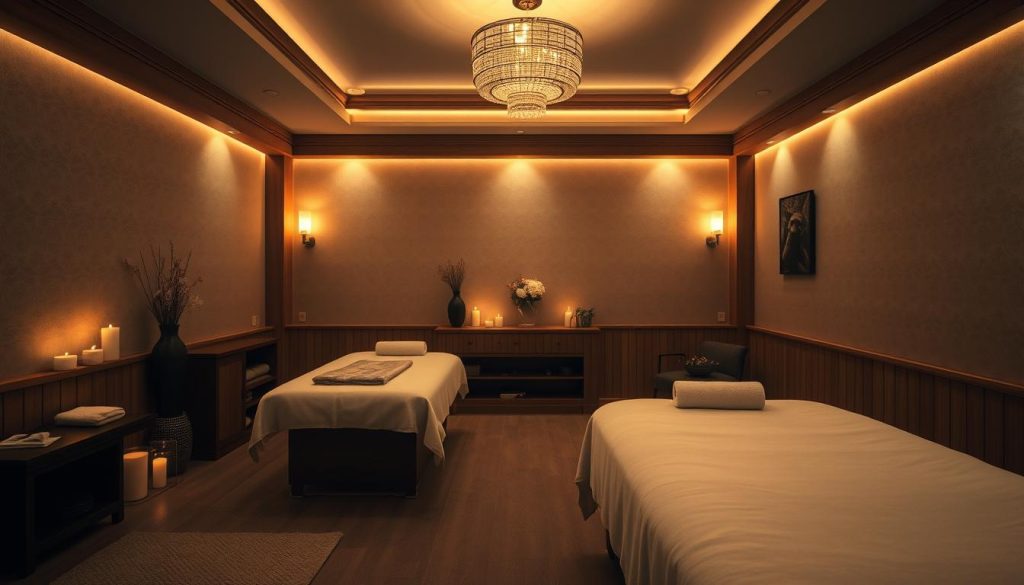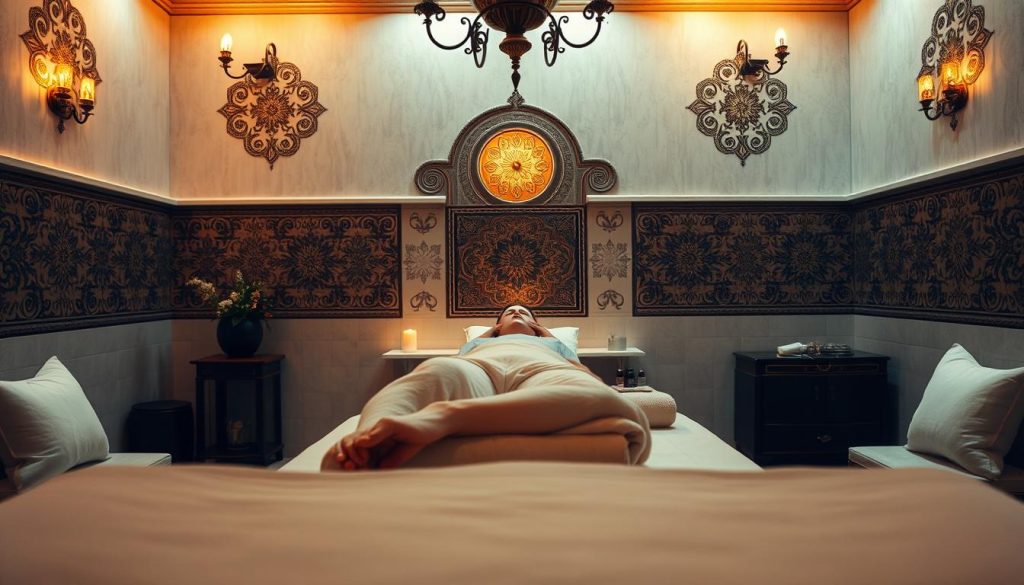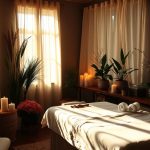Imagine walking into a serene spa nestled between Istanbul’s historic landmarks. You’re greeted by skilled hands ready to melt away stress – but does the practitioner’s gender truly shape your wellness journey? This vibrant city blends centuries-old healing traditions with cutting-edge massage services, creating endless possibilities for personalized care.
From the aromatic steam rooms of Hurrem Sultan Hammam to modern clinics near Taksim Square, Istanbul’s therapists master both Ottoman techniques and Western modalities. Many travelers discover that treatment effectiveness often depends more on specialization than gender – though cultural preferences sometimes play a role.
Certified professionals adapt their approach whether you seek deep tissue relief or aromatherapy relaxation. Establishments like Victory Spa in Beyazıt District prioritize your comfort through private rooms and English-speaking staff. Their services demonstrate how Istanbul’s wellness scene caters to diverse needs while maintaining strict privacy standards.
Key Takeaways
- Cultural preferences and treatment goals influence therapist selection more than gender alone
- Istanbul combines traditional Turkish methods with modern therapeutic approaches
- Certification and specialization ensure quality across all massage types
- Central locations and flexible scheduling enhance accessibility
- Private facilities maintain comfort for all clients
- Explore certified professionals matching your wellness objectives
Understanding Istanbul’s Rich Massage Legacy
Centuries before modern spas, Istanbul’s bathhouses pulsed with life. These spaces blended wellness with community, shaping traditions still alive today. Let’s explore how ancient rituals evolved into the city’s celebrated massage experiences.
Historical Significance of Turkish Massage Culture
Byzantine engineers first designed Istanbul’s bath systems, but Ottoman architects perfected them. Hamams became social hubs where people cleansed bodies and minds. Warm marble slabs and herbal steam softened muscles while skilled attendants scrubbed away tension.
Gender-specific sections in these Turkish baths set cultural norms. Women and men visited separate areas, each staffed by same-gender therapists. This tradition still influences preferences for practitioners today.
Modern Innovations in Massage Therapy
Today’s spas honor heritage while embracing innovation. Many combine traditional Turkish scrubs with hot stone therapy or CBD oils. Facilities like Masaj Vakti blend Ottoman-style architecture with sound healing rooms.
Therapists now train in multiple disciplines. You might receive a classic hamam treatment followed by Swedish techniques. This fusion creates unique wellness journeys rooted in history yet tailored for modern needs.
masseuse or masseur – which one to choose in istanbul?
Navigating Istanbul’s wellness landscape requires understanding subtle distinctions in therapeutic care. Cultural norms and treatment objectives often guide decisions more than practitioner gender alone.

Key Differences Between Practitioners
Female therapists frequently excel in relaxation-focused methods like aromatherapy or lymphatic drainage. Their approach often emphasizes gradual tension release through moderate pressure. Male practitioners typically handle sports recovery or chronic pain management, applying deeper techniques suited for muscular rehabilitation.
Traditional hamams maintain strict same-gender policies for cultural respect. Men receive services from male therapists wearing modest wraps, while women work with female professionals in separate areas. Modern spas adapt these traditions with private rooms and flexible options.
How to Decide Which One Suits Your Needs
Assess your body‘s response to different pressure levels. Those seeking gentle rejuvenation might prefer female-led sessions, while athletes needing intense work could opt for male therapists. Explore certified therapists specializing in your required treatment type.
Consider communication ease and cultural comfort. Many facilities like European-side clinics employ multilingual staff to clarify preferences. Check session pricing when comparing techniques across gender-specialized services.
Remember: Licensing standards ensure all professionals deliver effective care. Your relaxation depends more on personal alignment with the therapist’s expertise than their gender.
Navigating Istanbul’s Traditional Turkish Baths
Marble corridors whisper stories of sultans as you step into Istanbul’s living wellness museums. These architectural marvels blend therapeutic care with cultural immersion, offering Turkish bath experiences unchanged for centuries. From domed chambers near Hagia Sophia to modern hotel spas, each venue preserves Ottoman traditions while adapting to contemporary needs.
Experiencing Authentic Ottoman Hamams
Authentic sessions begin in heated marble rooms where steam opens pores. Attendants use coarse mitts for exfoliation, followed by olive oil soap massages. The Kılıç Ali Paşa complex showcases this ritual in its original 16th-century setting, with separate sections for men and women maintaining historical norms.
Traditional hamams like Çemberlitaş in Fatih district employ therapists trained in Ottoman-era techniques. Their skilled hands balance vigorous scrubbing with soothing foam washes, leaving skin rejuvenated. Many travelers pair these services with cultural tours for full immersion.
Notable Bathhouses and Their Unique Offerings
Ayasofya Hürrem Sultan Hamami near Hagia Sophia elevates the experience with gold-accented domes and silk towels. Designed by architect Sinan, it offers separate hours for genders and premium packages including aromatic oil treatments. Prices start at $60 for basic access.
For historical significance, Haseki Hürrem Sultan Hamam in Sultanahmet stands on ancient Roman baths. Five-star hotels like Four Seasons integrate Turkish hammam rituals into spa menus, blending luxury with tradition. Always verify service quality standards when selecting venues.
Tips for a Successful Massage Experience in Istanbul
Preparing for your wellness journey ensures maximum benefits from Istanbul’s therapeutic traditions. Follow these guidelines to navigate cultural nuances and enhance your relaxation outcomes.
Pre-Massage Preparation and Expectations
Book appointments 24 hours ahead – popular venues fill quickly. Arrive with an empty stomach to avoid discomfort from heat and pressure techniques. Wear loose clothing for easy changing in private rooms.
Carry enough money for both service fees and 10-20% gratuity. Hydrate well throughout the day using water or herbal teas. Those with heart conditions should consult doctors before traditional hamam sessions.
During Your Session: Communication and Comfort
Traditional wraps differ by gender – waist-length for men, full-body coverage for women. Therapists use firm pressure by default, but expert practitioners adjust techniques when requested. Limit conversation unless addressing discomfort.
Focus on your body’s responses as heated marble surfaces enhance muscle release. For answers to common questions, review spa policies beforehand.
Post-Massage Wellness and Aftercare
Rehydrate immediately with electrolyte-rich fluids. Schedule 90 minutes of rest post-session – avoid strenuous activities. Mild soreness often indicates effective tissue work, but persistent pain warrants medical consultation.
Plan light meals and warm showers to prolong the relaxation effects. Return visits typically yield better results as your body adapts to therapeutic methods.






